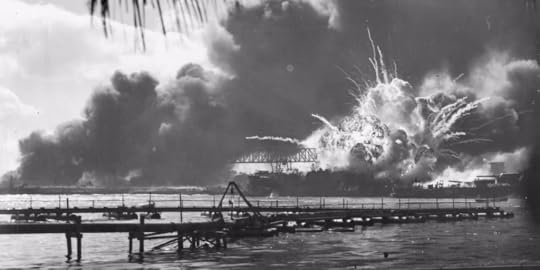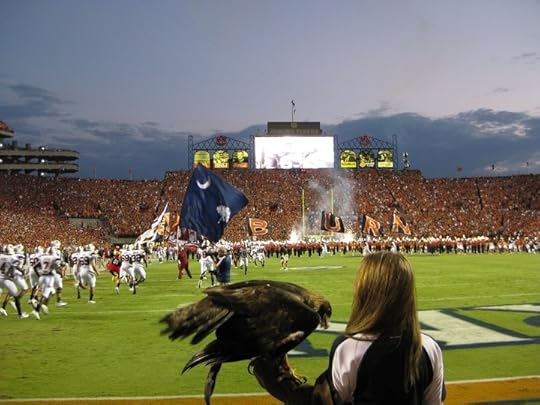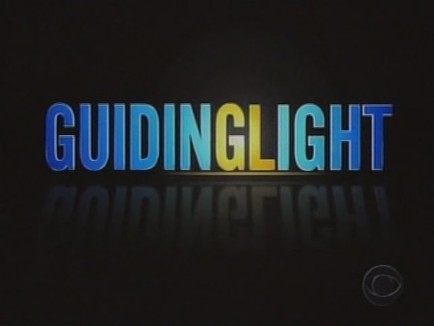Bathroom Readers' Institute's Blog, page 64
March 17, 2017
St. Patrick’s Day In Other Places

St. Patrick’s Day is widely celebrated in the U.S. and Ireland, of course. But did you know it’s a big deal in other countries?
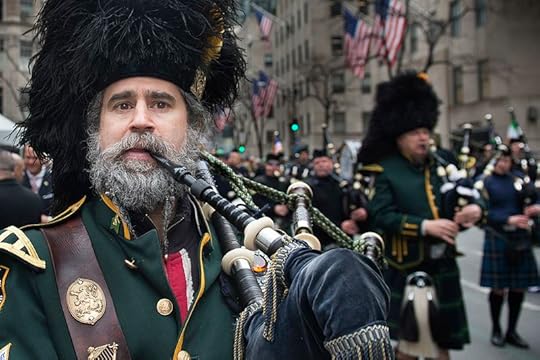
In England. The two biggest St. Patrick’s Day parades are in New York City and Dublin. After that is the one in Manchester, the English city with the largest Irish population (outside of London). It’s home to a two-week long Irish festival leading up to St. Patrick’s Day, including the parade, an Irish market, and demonstrations on Irish history and culture.
In Norway. There are a few thousand people of Irish descent in the Norwegian capital city of Oslo, which is more than enough for a parade. Its centerpieces are an Irish pipe band and an actor dressed as St. Patrick riding in a horse-drawn carriage driven by a chauffeur wearing a red beard.
In Italy. The biggest Irish celebration in Italy is the Festa Islandese (“Irish Festival”) in Florence. One might think St. Patrick’s Day is a raucous holiday in the U.S., but this one lasts for ten days and attracts thousands to a huge tent, where they’re served potato soup, beef cooked in Guinness, and Guinness.
In Germany. St. Patrick’s Day falls almost exactly between Oktoberfests, so in the German region of Bavaria, it serves as a mini-Oktoberfest to hold everybody off for six months. Held by the German-Irish Society of Bavaria since 1996, it’s the biggest St. Patrick’s Day celebration in mainland Europe. (It also celebrates Irish and Scottish cultures.) There’s dancing, live concerts, a parade, and, of course, plenty of beer.
In the Caribbean. St. Patrick’s Day is an official government holiday in only three place around the world: Ireland, in the Canadian province of Newfoundland and Labrador (where nearly a quarter of the population is of Irish descent), and Montserrat, the 39-square-mile British-controlled island in the Caribbean. Occupied by European settlers since the 1630s, the first big wave of settlers to Montserrat were Irish. The day is legal holiday for residents, and it’s also an observance of an unsuccessful uprising by slaves against Irish farmers in 1768.
The post St. Patrick’s Day In Other Places appeared first on Trivia Books and Facts | Uncle John's Bathroom Reader.
Ask Uncle John Anything: Are You Ready for Some “Football”?

Uncle John knows pretty much everything—and for what he doesn’t know, he has a massive research library. So go ahead: in the comments below, ask Uncle John anything. (And if we answer your question sometime, we’ll send you a free book!)
Why do Americans call it soccer and the English call it football?
The United States is one of the few places where the game of kicking a ball into a net is called soccer—the rest of the English-speaking world calls it football, particularly in the United Kingdom. Ironically, we Americans started calling it soccer (not football) because of the British.
Football/soccer in England is governed by a complicated hierarchy of different levels of teams, or “associations.” About 200 years ago then, the sport became most commonly known in the U.K. as association football. It had been known as football, but the rise in popularity of rugby—or rugby football as it was known—prompted the need for distinction. Over time, “soccer” took hold as the preferred term, with “socc” coming from the “association” part of “association football.” (And for its part, rugby similarly, albeit briefly, was called “rugger.”)
Another game gained in popularity in both the U.K. and the U.S. in the 1800s as well. Based on medieval games, they called it “gridiron” in the U.K., and “football” in the U.S.—hey, the name wasn’t taken, and early football involved a lot more kicking than it does today.
Soccer was still widely used in England well into the 20th century, often interchangeably with football. Around the late 1970s, when pro soccer enjoyed a brief spell of popularity in the U.S., linguists say that the British reacted by football completely replacing soccer in the British vernacular. “Soccer” was just too “American” of a word.
But in the last few decades, the sport that Americans call football has been gaining in worldwide popularity. That’s due in part to the minor league NFL Europe, which used to be called the World League of American Football. And that’s what countries who already have “football” then call football: American football.
(This is to say nothing of Australian rules football, which is closer to rugby than either sport called football, or Canadian football, which is a variation of American football.)
The post Ask Uncle John Anything: Are You Ready for Some “Football”? appeared first on Trivia Books and Facts | Uncle John's Bathroom Reader.
March 14, 2017
Missed It By That Much
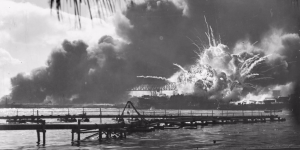
It’s bizarre to think that the outcome of some of the most momentous events in Western history have hinged on one detail. But that’s the case. Here are four examples of what we mean.
The American Revolution
Near Miss: If, in 1776, a pro-British soldier had read a note instead of sticking it in his pocket, America might have lost the Revolutionary War.
What Happened: The British had captured New York and sent the rebels scattering across New Jersey. Now winter set in, and while British troops quartered in towns and villages, George Washington and his men camped in the wilderness without sufficient shoes or blankets for everyone. Morale was low; Washington badly needed a victory to rally his troops or, he said, “I think the game will be pretty near up.” Just in time, Washington learned that the Hessian troops (pro-British German mercenaries) stationed at Trenton were vulnerable to a surprise attack. So around midnight, December 26, he and his men secretly crossed the Delaware River to strike. A British spy found out their plans. But when the spy arrived at the Hessian camp, he was told to leave a note for the German-speaking colonel in charge. The colonel was busy “drinking applejack and playing cards”…and when he was handed the note, he ignored it. “It was late, he was groggy, and the note was in English, which he couldn’t read. He put it in his pocket.” “Washington attacked at dawn and took one thousand prisoners in a much-needed victory. The colonel was wounded in the battlefield. As he lay dying, the note was found and translated into German. Had he read it earlier, he admitted, ‘I would not be here.”’
The Titanic
Near Miss: With an extra pair of binoculars, the Titanic might have been saved.
What Happened: After the Titanic was launched, but before it left on its maiden voyage in 1912, one of the ship’s lookouts reported that two pairs of binoculars—used by the deck crew to spot icebergs—were missing. He put in a request for a new pair, but the request was denied. So the deck crew kept watch for icebergs with their naked eyes. On April 16, 1912, the Titanic struck an iceberg and sank, drowning more than 1,500 people. Lookout Frederick Fleet, one of only 705 survivors, told investigators that the binoculars would have allowed the crew to see the iceberg in time to avoid it.
Pearl Harbor
Near Miss: The U.S. almost learned of the attack on Pearl Harbor in time to defend against it.
What Happened: At 7a.m. on the morning of December 7, 1941, radar operators Joseph Lockhard and George Elliott had just finished their shift at a radar station on the island of Oahu, Hawaii. But the truck that was supposed to pick them up was late, so they stayed at their consoles a few minutes longer, and at 7:02 Elliott picked up the biggest blip either man had ever seen. They tried to call the control room, but according to John and Claire Whitcomb in their book Oh Say Can You See, “the line was dead—the men in the control room had gone to breakfast.”
Elliott tried the regular phone circuit and got through to Lieutenant Kermit Tyler, a pilot who was the only person on duty. “There’s a large number of planes coming in from the north, three degrees east.” Lieutenant Tyler was unimpressed. Lockhard got on the line and tried to convince the lieutenant that it was important—he had never seen so many planes on the screen. “Well, don’t worry about it,” Tyler finally said. At 7:45 a.m. the truck came and the two privates shut down the station and left. At 7:55 a.m. the first bombs fell on Pearl Harbor.
A President’s Life
Near Miss: President Franklin Delano Roosevelt was almost assassinated in 1943, during World War II…by the U.S. Navy.
What Happened: On November 14, 1943, the battleship Iowa was carrying FDR and his joint chiefs of staff to Cairo for a secret conference with Winston Churchill and Chiang Kai-shek. According to one account, “In one of the U.S. Navy’s most embarrassing moments, the destroyer William D. Porter, making a simulated torpedo attack during defensive exercises, inadvertently fired a live ‘fish’ directly at the Iowa. Five minutes of pure panic ensued. The Iowa’s skipper desperately executed a high-speed turn, trying to get his ship out of the line of fire. However, as the torpedo entered the Iowa’s churning wake, it exploded, set off by the extreme turbulence of the sea.”
The post Missed It By That Much appeared first on Trivia Books and Facts | Uncle John's Bathroom Reader.
It Came from a Whale?

Seafaring was a major foundation of the world economy in the 1700s and 1800s because of whaling. Hunting whales and processing their fat, teeth, and other parts into useful goods was extremely important and profitable. (So much so that whales are now mostly endangered.) Whaling is now banned virtually worldwide, but here’s a look back on the golden age of whale stuff.

Candles
Whale oil came from the head of a sperm whale, and it was technically and commercially known as spermaceti. Extremely fatty and waxy, it was first made into candles in the 1750s by Jacob Rodriguez Rivera of Newport, Massachusetts. The whale fat made for great candles because it provided a bright, clear flame, but gave off very little smoke.
Lamp Fuel
Whale fat could be distilled into a liquid form and was used as lamp fuel. (However, it smelled kind of weird when burned.)
Cosmetics
Cosmetic manufacturers used it in makeup. Why? As one old advertisement noted, it “imparts a rich, glossy sheen.”
Rust Preventing
It was used as the main ingredient in rust-preventing compounds. (After all, whales are pretty waterproof.)
Photography
In the early days of photography, whale oil was among the many chemicals used to preserve a photograph. It was used as a glaze on the final product.
Medicine
Similar to how gelatin is used today to make pills and vitamins easier to swallow, a little bit of whale oil mixed into a capsule helped the medicine go down.
Lubricant
It was an industrial lubricant, used to help machines run smoother. It was especially prominent in factories that manufactured metal tools.
Fake Butter
Today, margarine is a butter substitute made from vegetable oil. Before that process was perfected in the 20th century, the most common fake butter was made out of whale oil.
Transmission Fluid
When automobiles became commonplace in the early 20th century, whale oil was a main ingredient in transmission fluid. Once whales were declared an endangered species, it became illegal to use it.
Soap
Whale oil soap was available, but it was used primarily for industrial uses. Reason: Whale oil soap smelled terrible and tended to discolor anything it touched.
Baleen
Apart from sperm whales and their spermaceti, the baleen whale was also widely hunted. Its most attractive attribute was baleen, incorrectly nicknamed whalebone. It’s a hard material that makes a sieve in a baleen whale’s mouth, trapping millions of tiny, edible organisms that the whale uses for food. A tough but flexible substance, baleen was used to make corsets, shirt collars, whips, toys, and typewriter springs.
Chess Pieces and Piano Keys
Sperm whales don’t have baleen, but they did have very strong teeth. It was commonly used as a cheaper substitute for ivory in things like chess pieces and piano keys.
The post It Came from a Whale? appeared first on Trivia Books and Facts | Uncle John's Bathroom Reader.
March 13, 2017
Ultra-Rare Achievements in the NHL
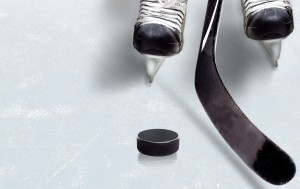
It’s really hard to skate on ice and play a contact sport. It’s even harder to do these things while doing that.
A goal in every possible way
There are five different permutations or situations in which a player can score a goal in hockey. They are even strength (both teams have six skaters on the ice, no one in the penalty box); when a team has five players on the ice due to a penalty; when the other team has five players on the ice due to a penalty; on a penalty shot; into an empty net, when the goaltender has been pulled to instead have another player on offense Only one time has one player scored during all of those situations in a single game. Mario Lemieux of the Pittsburgh Penguins did it on New Year’s Eve, 1989.
Most points by a goalie in a single game
Goalie is almost an entirely defensive position. Their job is to stand in front of the net and prevent the other team from scoring, so they’re pretty much supposed to stay in one place. (Even if they could move, it would be hard with all that protective gear on.) During a game in February 1993, the Calgary Flames beat the San Jose Sharks 13-1, one of the highest-scoring games in NHL history. And amazingly, three of those points came from Flames goalie Jeff Reese. He was able to shoot the puck directly to an offensive teammate who turned it into a goal three separate times. Those assists give Reese the most prolific scoring night ever for a goaltender.
Scoring a goal in a game in which the player didn’t play
On March 10, 2014, the Dallas Stars hosted the Columbus Blue Jackets. Just about two minutes into the first period, the Blue Jackets’ Nathan Horton scored a goal. But then a few minutes later, the game was called off due to an emergency: Rick Peverley of the Stars suffered a heart attack and collapsed on the team bench. Peverley survived, but the game had to be rescheduled for April 2014. That gave the league time to figure out how to handle the continuation—they had to have a full, 60-minute game so as not to cheat ticketholders for the make-up game, but also had to account for Horton’s goal. The solution: A new, full game would be played, but with the score set at 1-0, with Horton’s goal listed as happening at 0:00 in the first period. But before the make-up game, Horton went on the injured list. That means he’s listed as having scored a goal in a game…that he ultimately didn’t play in.
No Canadian teams in the playoffs
Hockey is a definitively Canadian sport, and the two institutions are closely intertwined. The current NHL began as a six-team in the 1920s, with two of those teams being the Montreal Canadiens and Toronto Maple Leafs. Between 1927 and 1969, those two teams dominated the league, winning a combined 25 Stanley Cups. But then in 1970, for the first time ever, no Canadian team made it into the NHL playoffs. Toronto didn’t win enough games outright while Montreal lost a tiebreaker with the New York Rangers for the final spot. It wouldn’t happen again until the 2015-16, when none of the now-seven Canadian teams had a good enough record for the postseason.
The post Ultra-Rare Achievements in the NHL appeared first on Trivia Books and Facts | Uncle John's Bathroom Reader.
March 10, 2017
4 Working Titles of Classic Video Games

Even for creative types, it can be hard to come up with a good title. (Trust us – we make books for a living.) Here are some of the original names proposed for some of the most popular video games of all time…which might not have been so popular had those names been used.
Sonic the Hedgehog
This flagship title of the Sega Genesis starred one of the most famous video game characters of all time, a blue hedgehog who can run at lightning speed. When the game was in production in Japan, designers had called it Mr. Needlemouse. Why? “Needlemouse” is the translation of the Japanese word for “hedgehog.”
Doom
This series pioneered the “first-person shooter” genre of games, in which the action takes place as if it’s from the player’s actual point of view. Creator John Carmack started designing the game in the early ‘90s, about a “space marine” who had to kill angry, bloodthirsty monsters. He floated the titles It’s Green and P***** as well as Attack of the Attackers. Carmack didn’t like either one much, but he was inspired while watching the 1986 movie The Color of Money. In one scene, Tom Cruise’s character is holding his custom pool cue case, waiting for a game to start. Another player asks him what’s in the case, and he responds, “Doom.”
Dr. Mario
Trying to re-create the success of the puzzle game Tetris, in 1990 Nintendo released another puzzle game called Dr. Mario, in which players had scored points by correctly stacking and matching two-colored pill capsules. Before the company decided to brand it with their most popular character, the Italian plumber Mario from Super Mario Bros. who had somehow found the time to get a medical degree, it was just going to be a generic puzzle game, but with the ominous title of Virus.
Pac-Man
“Paku-paku” is a Japanese onomatopoeia phrase which mimics the sound of eating. (Similar English onomatopoeia: crunch or gobble.) Since the game was about a yellow circle eating white dots and ghosts, developers at Namco decided on the title Pakkuman for Japan, and Puck-Man for the U.S. But then some executives worried (probably rightfully) that arcade cabinets bearing that title might be easily vandalized to change the name into something naughty. Puck-Man became the meaningless (but safe) Pac-Man.
The post 4 Working Titles of Classic Video Games appeared first on Trivia Books and Facts | Uncle John's Bathroom Reader.
March 9, 2017
Mascots Gone Wild
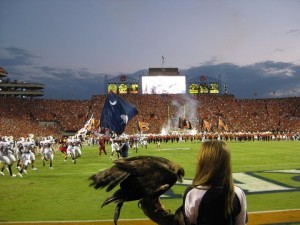
There’s an old adage in Hollywood: “Never work with kids or animals.” These sports teams didn’t heed this message (well, the animal part), and found out what happens when a beast decides to act on its own.
The Atlanta Flacon
On September 11, 1966, the Atlanta Falcons took the field for the first time as the NFL’s newest expansion team. The first game in franchise history was a major event for a city on the rise. In front of a sellout crowd that included a who’s who of local politicians and dignitaries, the Atlanta squad was supposed to be led out onto the field by a real-live falcon—who was trained to make two majestic laps of the stadium before settling onto a high profile perch from which he would then lend moral support to his team.
Right on cue, the bird of prey gracefully winged out over the field…and kept on going, soaring up over the 54,000 screaming fans and out of the stadium, never to be seen again. Undeterred, the team’s owners went out and got a new falcon and tried again—three more times, only to watch their prized falcon fly out of the stadium each time. Atlanta’s football Falcons may have wanted to do the same after losing their first nine games in a row.
Texas A&M’s Reveille
Since 1931 Texas A&M University has had seven different dogs named Reveille serve as the college’s official mascot. The latest incarnation is a purebred collie that took over mascot duties in 2001. And Reveille VII has been the most troublesome by far. Her nearly nonstop high-pitched yelping has actually been heard over the school band in a stadium full of 82,000 screaming fans. Worse yet, Reveille bites people. On the field before a football game in 2004, she ran around and tore off a piece of a “yell leader’s” pants. She’s also snipped at a number of students (fortunately, none seriously). But because Reveille is “the most revered dog on campus,” the university has repeatedly refused to replace her. Why? She is, quite simply, Top Dog.
As the highest-ranking member in the Corps of Cadets, a student military organization, Reveille (she is the Cadet General) wears a ceremonial blanket studded with five diamonds
She’s the only non-service dog allowed to roam campus buildings
Military cadets must address her as “Miss Reveille, ma’am!”
If she feels like sleeping on a cadet’s bed, the cadet must sleep on the floor.
She even has her own cell phone (which is carried around by the Mascot Corporal, who acts as her caretaker and secretary).
But some students aren’t so sure Reveille is the best dog for the job. They’ve stopped short of asking for her replacement, but do request that she stay in obedience school until she can handle her duties better. (She’s been through several stints already.) “Even though Rev is held in high regard,” student columnist Jim Foreman wrote in 2004, “she is certainly outranked by A&M President Robert M. Gates, and God knows what would happen if he were to bite one of the yell leaders.”
Update: As Reveille VII has matured out of puppyhood, she’s calmed down and seems to be performing her mascot duties honorably… and obediently.
The Auburn War Eagle
Animal trainers at Auburn University in Alabama have gone through five eagle mascots since 1930. While they’ve had a nearly perfect track record of not flying away (only one has escaped), one particular War Eagle (IV) seemed to take an opposing team’s touchdown rather personally. It happened in a 1976 game against rival University of Florida, when late in the game Florida receiver Wes Chandler caught a pass and ran the ball 80 yards for a touchdown to put the visiting Gators ahead. Apparently unable to stand by and watch his team go down in defeat, the War Eagle flew onto the field and attacked the startled receiver. “The last Auburn defender who had a shot at me dove and missed,” recalled Chandler. “Just about that time, I heard a loud squawk and the bird bit me. It probably would have hurt if I didn’t have the pads on.” Not quite sure what to do, the referees ended up charging War Eagle with a 15-yard personal foul (fowl?) on the ensuing kickoff. Auburn went on to lose the game.
The post Mascots Gone Wild appeared first on Trivia Books and Facts | Uncle John's Bathroom Reader.
March 7, 2017
5 Weird Old Video Game Accessories You Probably Didn’t Need

Saving the princess, running from ghosts, and playing a plastic guitar can be hard work, so sometimes video gamers need something beyond a standard joystick.
Super Scope
The original Nintendo Entertainment System in the ’80s came packaged with a small handheld “light gun.” Used in a bunch of games, it allowed gamers to shoot at stuff on their screen (a flash of light would register as a “hit”), just like they would in the arcade. When the Super Nintendo Entertainment System was released in the early ‘90s, so too was the Super Scope. Utilizing the same technology as the light gun, this accessory was the size of a bazooka, and had to be shoulder mounted. It also required six AA batteries to work and cost almost as much as the Super Nintendo Entertainment System did.
Wii Car Adapter
In the 2000s, the Wii was a massive success for Nintendo. Encouraging movement, interaction, and group gaming, the system’s wireless, hand-held controllers translated player movements to the screen: that meant actual swinging for a tennis game, or pretending to throw a ball for a bowling game. Those games require lots of space, which is why it’s weird that Nintendo sold a device that allowed Wii owners to play in their cars…where they had to sit down and not move much at all.
Resident Evil 4 Chainsaw Controller
The long-running Resident Evil series is basically about killing monsters. These games are violent and gory of course, made all the more so by the Resident Evil 4 Chainsaw Controller that was available for the PlayStation 2. The plastic, half-size chainsaw came pre-painted with zombie blood and vibrated whenever a player recorded a kill onscreen with a chainsaw, so as to provide a “realistic chainsaw feel.” It also came with a display stand so players could show off their fake chainsaw when it wasn’t in use.
“W” Controller
The ‘90s hip-hop group the Wu-Tang Clan (famous for members for RZA and Method Man) was obsessed with martial arts and old martial arts movies, frequently rapping about those subjects in their songs. In 1999, the collective got its own martial arts-style fighting game, Wu-Tang Clan: Shaolin Style. Sold separately was the “W” Controller. It was a basic video game controller, with a directional pad and some action buttons, but it was shaped like the Wu-Tang Clan’s stylized “W” logo.
The Atari Mindlink
It allowed gamers to control video games with their minds. Pretty heady technology for 1983…except that it didn’t really scan brains. The Mindlink was a wired headband that plugged into an Atari 2600 and other Atari consoles. Instead of using a controller with their fingers, Mindlink wearers moved their eyebrows to determine what their character in the video game did. The device then translated those eyebrow twitches to in-game actions. During product testing, players got massive headaches because they had to furrow their brow just so, and for long periods of time, for the device to work correctly. That snafu, along with Atari’s near-bankruptcy in 1983, prevented the Mindlink from ever being officially released.
The post 5 Weird Old Video Game Accessories You Probably Didn’t Need appeared first on Trivia Books and Facts | Uncle John's Bathroom Reader.
Pudge Goes Pro
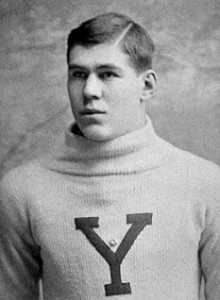
Here’s the story of the very first pro football player.
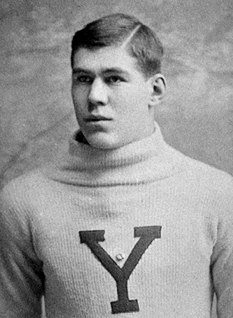 College Game
College GameFootball was invented at Ivy League colleges in the 1870s, combining rugby with some other ball games popular at the time. For more than 50 years the college game was the dominant form of the sport, both in terms of the number of teams and the number of fans. College football was football. But what about people who didn’t go to college, or grads that wanted to relive their glory days? They wanted to play, too, and they wanted teams they could root for. So in the 1890s local sports clubs and businesses began to organize teams.
These sports clubs, such as the YMCA, had an agenda: their members saw them as stepping-stones to get into even more exclusive clubs and a great way to do that was to belong to a club with a successful sports team. So the pressure was on from the beginning to recruit the best men possible.
One problem: it was against the rules to pay athletes for playing. Amateurism was seen as a noble quality; getting paid to play was seen as crass. So instead of breaking the rules, the clubs bent them. San Francisco’s Olympic Athletic Club, for example, promised to find a job for any athlete that joined the club. Even if this didn’t technically violate the rules, it certainly violated the spirit of amateurism. But the practice was so widespread that, rather than condemn it, in 1890 the Amateur Athletic Union, which governed amateur clubs, created an entirely new category for that kind of athlete—the “semiprofessional.”
Lord of the Ringers
William “Pudge” Heffelfinger was a former All-American for Yale University. One of the best players of his time, Heffelfinger was famous for hurling himself over the heads of interlocked offensive linemen and cannonballing knee-first into the ball carrier’s chest. (Needless to say, the rules of football were quite different back then.)
A popular practice at the time was to cheat by hiring ringers, skilled college players who posed as average Joes and played under assumed names. Heffelfinger was sorely needed by two rival clubs in Pittsburgh, Pennsylvania: the Allegheny Athletic Association and the Pittsburgh Athletic Club. After playing to a 6–6 tie in the citywide championship game in October 1892 (highly contested because Allegheny had stolen some of Pittsburgh’s best players), a rematch was set for three weeks later. Both clubs scrambled to field the best teams possible; both clubs secretly met with Heffelfinger.
Game Day
More than 3,000 people turned out for the rematch on November 12, even though it was snowing. The Allegheny crowd cheered when Pudge took the field with their team. The Pittsburgh side cried foul—Allegheny was using ringers, after all. They refused to play unless Allegheny agreed that all bets placed on the game were off. (Gambling was another big part of the early game.) After nearly an hour, Allegheny agreed.
For all the hoopla that led up to it, the game itself was pretty uneventful. Pudge scored the only touchdown, and Allegheny won 4–0 (back then, a touchdown only counted for four points—today it counts for six). Even with the low score and the bitterly cold weather, the crowd was entertained by the brutal play and carnage on the field. Several players were injured—three had to be carried off on stretchers.
Today, Pudge Heffelfinger is just a footnote in professional football. He wouldn’t even be that, were it not for a single scrap of paper that survived among the Allegheny Athletic Association’s financial records for the 1892 season. Today that scrap of paper— an expense sheet for the November 12 game—is on display in the Pro Football Hall of Fame. On it is an entry showing that, in addition to being reimbursed for his expenses, Heffelfinger received a $500 “game performance bonus for playing.” And in those days, $500 was about what a schoolteacher made in a year. Although neither Pudge nor Allegheny ever admitted to the transaction, the expense sheet speaks for itself: Heffelfinger was the first documented professional football player in the history of the game.
The post Pudge Goes Pro appeared first on Trivia Books and Facts | Uncle John's Bathroom Reader.
Scandalous Soap Opera Secrets!
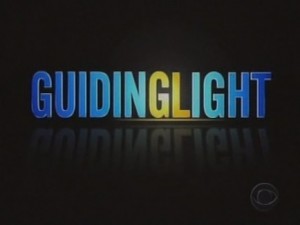
On this day in 1933, the first ever American daytime serial, Marie, the Little French Princess, debuted on CBS Radio. “Soap operas,” as they came to be known on both radio, and eventually television, because sponsors were primarily cleaning products, have been a part of the cultural landscape ever since. Like “sands through the hourglass” here are some fun facts about soap operas.
First daily soap opera on TV. The first serialized drama to air during five days a week during the day was The First Hundred Years. About two married couples who were next-door neighbors, it debuted in December 1950 and lasted until June 1952. It was canceled because its ratings were very low—in part because very few American homes had a TV set at the beginning of the 1950s, and those that did didn’t watch much TV in the daytime. But The First Hundred Years did lead to a TV innovation still used to this day. Hubert Schlafly invented the script-displaying device called the teleprompter—it was just that hard for the actors to learn an entire script’s worth of lines five days a week.
Longest running TV soap opera. CBS replaced The First Hundred Years on its schedule in 1952 with a TV adaptation of the radio hit Guiding Light. It stayed on the air until 2009, a remarkable run of 57 years on television—plus another 15 on the radio. (For most of its run, the series was a standard soap about love and romance, but when it began it was about the life of a minister.)
First primetime soap spinoff. In the mid-1960s, the most-watched soap opera on TV was CBS’s As the World Turns. It was so successful that in 1965 the network commissioned a primetime version called Our Private World. It was not as much of a hit as its daytime predecessor, and it lasted less than a year.
First adult soap opera. While soap operas generally don’t cater to kids, A New Day in Eden definitely didn’t. Debuting on the premium cable network Showtime in 1982, the series, co-created by General Hospital and As the World Turns writer Douglas Marland, featured a lot of the same plots as the network soaps…but with lots and lots of full-frontal nudity. It lasted just 13 episodes.
The year with the most soaps. The 1969-1970 TV season was the time of “peak soap.” That season, the Big 3 broadcast networks placed a record 19 daytime dramas on the air. (New that year: All My Children, which would air on ABC for 43 years.)
The year with the least soaps. That would be…right now. Daytime TV is crowded with game shows, court shows, talk shows, and sitcom reruns, and the soap genre has been squeezed out. There are only four left on the air today: The Young and the Restless, The Bold and the Beautiful, General Hospital, and Days of Our Lives.
The post Scandalous Soap Opera Secrets! appeared first on Trivia Books and Facts | Uncle John's Bathroom Reader.


